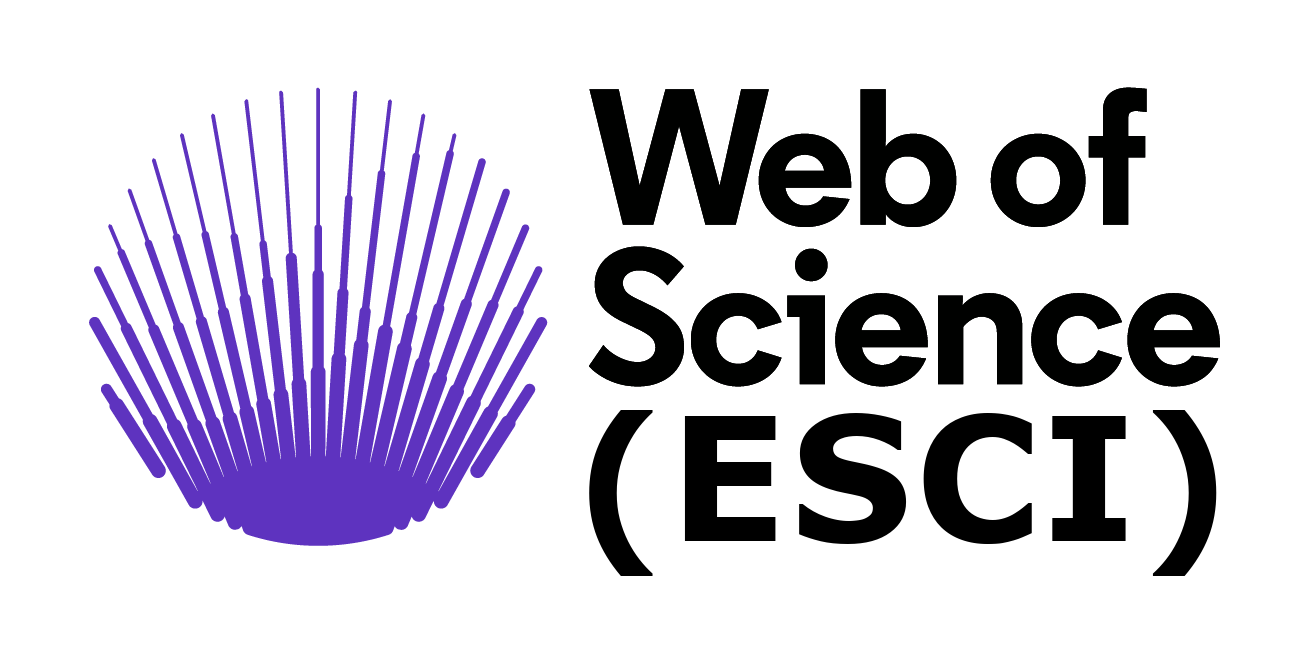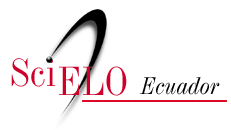Monitoring the removal of a mixture of emerging pharmaceutical contaminants assisted by a fixed TiO2 support in a photocatalytic process
DOI:
https://doi.org/10.29019/enfoqueute.1122Keywords:
Photocatalysis, Titanium dioxide, emerging pharmaceutical contaminantsAbstract
This study evaluated the efficacy of removing estradiol, sulfamethoxazole, and paracetamol from water using titanium dioxide (TiO2). A layer of TiO2 was fixed onto ceramic tiles and exposed to a solution of the pharmaceuticals under 254 nm ultraviolet light. The TiO2 exhibited a surface area of 2.78 m²/g with Methylene Blue, which favors the adsorption and subsequent degradation of the pharmaceuticals. After 60 minutes of exposure, the removal of estradiol was 69.43%, paracetamol 50.84%, and sulfamethoxazole 24.80%. Additionally, it was determined that the degradation kinetics of each drug varied, with some fitting first-order models (estradiol and paracetamol) and others fitting second-order models (sulfamethoxazole). The time in minutes required for the drug concentration to decrease to one-tenth of its original concentration was 107 for estradiol, 190 minutes for paracetamol, and 244 for sulfamethoxazole. Photocatalysis with TiO2 immobilized on ceramics can be used to treat water contaminated with mixtures of pharmaceuticals without observing a restrictive effect between the drugs.
Downloads
References
[1] K. Fent, A. A. Weston and D. Caminada, “Ecotoxicology of Human Pharmaceuticals,” Aquatic Toxicology, vol. 76, no. 2, 2006. https://doi.org/10.1016/j.aquatox.2005.09.009
[2] L. H. M. L. M. Santos, A. N. Araújo, A. Fachini, A. Pena, C. Delerue-Matos and M. C. B. S. M. Montenegro, “ecotoxicological aspects related to the presence of pharmaceuticals in the aquatic environment,” J Hazard Mater, vol.175, no. 1-3, 2010. https://doi.org/10.1016/j.jhazmat.2009.10.100
[3] H. Wang, H. Xi, L. Xu, M. Jin, W. Zhao and H. Liu, “Ecotoxicological effects, environmental fate and risks of pharmaceutical and personal care products in the water environment: a review. science of the total environment,” vol. 788, 2021. https://doi.org/10.1016/j.scitotenv.2021.147819
[4] V. L. Marlatt, S. Bayen, D. Castaneda-Cortès, G. Delbès, P. Grigorova, V. S. Langlois, C. J. Martyniuk, C. D. Metcalfe, L. Parent, A. Rwigemera, P. Thomson and G. Van Der Kraak, “Impacts of endocrine disrupting chemicals on reproduction in wildlife and humans,” Environ Res., vol. 208, 112584, 2022. https://doi.org/10.1016/j.envres.2021.112584
[5] C. R. Tyler, S. Jobling and J. P Sumpter, Endocrine disruption in wildlife: a critical review of the evidence. Crit Rev Toxicol., vol. 28, no. 4, 1998. https://doi.org/10.1080/10408449891344236
[6] I. Vázquez-Tapia, T. Salazar-Martínez, M. Acosta-Castro, K. A. Meléndez-Castolo, J. Mahlknecht, P. Cervantes-Avilés, M. V. Capparelli and A. Mora, “Occurrence of emerging organic contaminants and endocrine disruptors in different water compartments in Mexico – A review,” Chemosphere, vol. 308, 2022. https://doi.org/10.1016/j.chemosphere.2022.136285
[7] S. Chandra, P. Jagdale, I. Medha, A. K. Tiwari, M. Bartoli, A. de Nino and F. Olivito, “Photocatalytic degradation of sulfamethoxazole in water —a review,” Toxics, vol. 9, no. 11, 2021. https://doi.org/10.3390/toxics9110313
[8] J. I. Martínez-Costa, M. I. Maldonado Rubio and R. Leyva-Ramos, “Degradation of emerging contaminants diclofenac, sulfamethoxazole, trimethoprim and carbamazepine by bentonite and vermiculite at a pilot solar compound parabolic collector. Catal Today vol. 341, 2020. https://doi.org/10.1016/j.cattod.2018.07.021
[9] V. P. P. Vélez, G. Esquivel-Hernández, I. Cipriani-Avila, E. Mora-Abril, J. F. A. Cisneros, Alvarado and V. Abril-Ulloa, “Emerging contaminants in Trans-American Waters,” Revista Ambiente & Água, vol. 14, p. e2436, 2019. https://doi.org/10.4136/AMBI-AGUA.2436
[10] S. Hernando-Amado, T. M. Coque, F. Baquero and J. L Martínez, “Defining and combating antibiotic resistance from one health and global health perspectives,” Nat Microbiol., vol. 4, pp. 1432-1442, 2019. https://doi.org/10.1038/s41564-019-0503-9
[11] C. M. Lee, N. A. B. A. Aziz, P. Palaniandy and S. S. Abu Amr, “Performance of natural sunlight on paracetamol removal from synthetic pharmaceutical wastewater using heterogeneous TiO2 photocatalyst,” Desalination Water Treat,. vol.78, pp. 341-349, Jun. 2017. https://doi.org/10.5004/dwt.2017.20879
[12] K. Poddar, D. Sarkar, D. Chakraborty, P. B. Patil, S. Maity and A. Sarkar, “Paracetamol biodegradation by pseudomonas strain PrS10 isolated from pharmaceutical effluents,” Int Biodeterior Biodegradation, vol. 175, 2022. https://doi.org/10.1016/j.ibiod.2022.105490
[13] A. Rempel, J. P. Gutkoski, M. T. Nazari, G. N. Biolchi, B. Biduski, H. Treichel and L. M. Colla, “Microalgae growth with a high concentration of emerging pollutants and phytotoxicity evaluation of cultivation wastewater,” Journal of Water Process Engineering, vol. 46, 2022. https://doi.org/10.1016/j.jwpe.2022.102616
[14] M. V. Capparelli, I. Cipriani-Avila, E. Jara-Negrete, S. Acosta-López, B. Acosta, A. Pérez-González, J. Molinero and V Pinos-Vélez, “Emerging contaminants in the northeast andean foothills of Amazonia: the case of study of the city of Tena, Napo, Ecuador,” Bull Environ Contam Toxicol, vol. 107, pp. 2-10, 2021. https://doi.org/10.1007/S00128-021-03275-8/METRICS
[15] L. Hongyan and L. Gao, Preparation and properties of Nanocrystalline α-Fe 2O 3-Sensitized TiO2 nanosheets as a visible light photocatalyst. In Proceedings of the Journal of the American Ceramic Society, vol. 89. 2006.
[16] J. Musial, D. T. Mlynarczyk and B. J. Stanisz, “Photocatalytic degradation of Sulfamethoxazole using TiO2-Based Materials – Perspectives for the development of a sustainable water treatment technology,” Science of The Total Environment, vol. 856, 159122, 2023. https://doi.org/10.1016/j.scitotenv.2022.159122
[17] M. C., Tonucci, L. P. dos Santos Xavier, A. C. da Silva, S. F. Aquino and B. E. L. Baeta, Removal of Estradiol from water with a Hybrid MIP-TiO2 Catalytic Adsorbent. Water Air Soil Pollut., vol. 231, 2020. https://doi.org/10.1007/s11270-020-04586-y
[18] Z. Shi, S. Yu, J. Nan and Q. Xiao, “The effect of multivalent anions on removal of titanium dioxide nanoparticles from drinking water sources by coagulation-sedimentation processes: efficacy and mechanisms,” Sep Purif Technol., vol. 298, 2022. https://doi.org/10.1016/j.seppur.2022.121667
[19] P. Tiwari, M. Verma, Ambika, H. Chutani, P. P. Singh, S. Kanodia and T. Verma, “Titanium dioxide-based nanoparticles and their applications in water remediation,” Journal of Environmental Engineering and Science vol. 19, no. 1, pp. 46–54, 2024. https://doi.org/10.1680/jenes.22.00095
[20] S.-Y. Lee and S.-J. Park, “TiO2 photocatalyst for water treatment applications,” Journal of Industrial and Engineering Chemistry, vol. 19, pp. 1761-1769, 2013. https://doi.org/10.1016/j.jiec.2013.07.012
[21] F. Broccoli, R. Paparo, M. R. Iesce, M. Di Serio and V. Russo, “Heterogeneous photodegradation reaction of phenol promoted by TiO2: A Kinetic Study,” Chem. Engineering, vol. 7, 2023. https://doi.org/10.3390/chemengineering7020027
[22] M. Coha, G. Farinelli, A. Tiraferri, M. Minella and D. Vione, “Advanced oxidation processes in the removal of organic substances from produced water: potential, configurations, and research needs. Chemical Engineering Journal, vol. 414, 2021. https://doi.org/10.1016/j.cej.2021.128668
[23] O. Fawzi Suleiman Khasawneh and P. Palaniandy, “Removal of organic pollutants from water by Fe2O3/TiO2 based photocatalytic degradation: a review,” Environ Technol Innov, vol. 21, 2021. https://doi.org/10.1016/j.eti.2020.101230
[24] X. Li, H. Wei, T. Song, H. Lu and X. Wang, “A review of the photocatalytic degradation of organic pollutants in water by modified TiO2”, Water Science and Technology, vol. 88, 2023. https://doi.org/10.2166/wst.2023.288
[25] O. Carp, C. L. Huisman and A. Reller, “Photoinduced reactivity of titanium dioxide,” Progress in Solid State Chemistry, vol. 32, no. 1-2, pp. 33-177, 2004. https://doi.org/10.1016/j.progsolidstchem.2004.08.001
[26] J. C. Santamarina, K. A. Klein, Y. H. Wang and E. Prencke, “Specific surface: determination and relevance,” Canadian Geotechnical Journal, vol. 39, pp. 233-241, 2002. https://doi.org/10.1139/t01-077
[27] J. Rouquerol, F. Rouquerol, P. Llewellyn, G. Maurin, and K. S. W. Sing, Adsorption by Powders and Porous Solids: Principles, Methodology and Applications. Second Edition, pp. 239-253, 2013. ISBN: 9780080970363, https://doi.org/10.1016/C2010-0-66232-8.
[28] M. Matsuoka, T. Toyao, Y. Horiuchi, M. Takeuchi and M. Anpo, Wastewater treatment using highly functional immobilized TiO2 thin-film photocatalysts. In Photocatalysis and water purification: from fundamentals to recent applications. 2013. https://doi.org/10.1002/9783527645404.ch7
[29] P. R. P. Pretto, S. M. Palácio, É. A. De Campos, C. R. Pazini and M. T. Veit, “Sulfamethoxazole photocatalytic degradation in a continuous flow reactor using artificial radiation,” Journal of Environmental Chemical Engineering, vol. 6, no. 2, pp. 1926-1933, 2018. https://doi.org/10.1016/j.jece.2018.02.018
Published
How to Cite
Issue
Section
License
Copyright (c) 2025 The Authors

This work is licensed under a Creative Commons Attribution 3.0 Unported License.
The articles and research published by the UTE University are carried out under the Open Access regime in electronic format. This means that all content is freely available without charge to the user or his/her institution. Users are allowed to read, download, copy, distribute, print, search, or link to the full texts of the articles, or use them for any other lawful purpose, without asking prior permission from the publisher or the author. This is in accordance with the BOAI definition of open access. By submitting an article to any of the scientific journals of the UTE University, the author or authors accept these conditions.
The UTE applies the Creative Commons Attribution (CC-BY) license to articles in its scientific journals. Under this open access license, as an author you agree that anyone may reuse your article in whole or in part for any purpose, free of charge, including commercial purposes. Anyone can copy, distribute or reuse the content as long as the author and original source are correctly cited. This facilitates freedom of reuse and also ensures that content can be extracted without barriers for research needs.
This work is licensed under a Creative Commons Attribution 3.0 International (CC BY 3.0).
The Enfoque UTE journal guarantees and declares that authors always retain all copyrights and full publishing rights without restrictions [© The Author(s)]. Acknowledgment (BY): Any exploitation of the work is allowed, including a commercial purpose, as well as the creation of derivative works, the distribution of which is also allowed without any restriction.






















 Enfoque UTE - Facultad de Ciencias de la Ingeniería e Industrias - Universidad UTE
Enfoque UTE - Facultad de Ciencias de la Ingeniería e Industrias - Universidad UTE